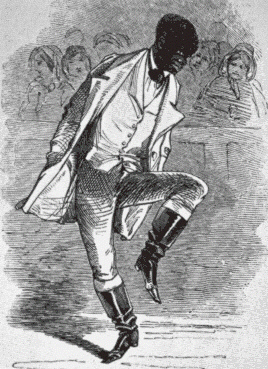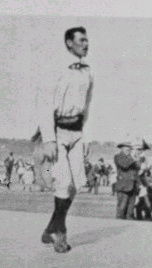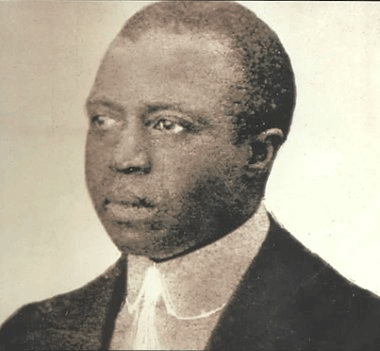IllmaticDelta
Veteran
Afro-European Fusion Dance in The New World
...before I get to my next point....There are many of these type of dances in the new world than came out of the Afro-Latin-AfroAmerican-South American-West Indian peoples. For example even dances like Salsa or Rhumba have a European dance influence while having the improvisational, syncopations and body positioning of African influences.
Cuban Danzon
A later description after more Africanisms started taking over
Contradanza
vs
...before I get to my next point....There are many of these type of dances in the new world than came out of the Afro-Latin-AfroAmerican-South American-West Indian peoples. For example even dances like Salsa or Rhumba have a European dance influence while having the improvisational, syncopations and body positioning of African influences.
Cuban Danzon
Cuban Danzon
Danzón was once called the official dance of Cuba. It is no longer an active musical form in Cuba, though it still survives in Mexico. Like the habanera, the danzón evolved from the contradanza. Originally, the contradanza was of English origin, and was evidently introduced to Cuba in the late 1700s by English visitors, Spanish colonists, and by French colonists fleeing the Haitian Revolution in the 1790s. In Cuba these dances were influenced by African rhythmic and dance styles, and so became a genuine fusion of European and African influences
The danzón developed in the second half of the 19th century, and has been an important root for Cuban music up to the present day. The precursors of danzón are the contradanza, and the habanera, which are creolized Cuban dance forms. The danzón was developed, according to one’s point of view, either by Manuel Saumell or by Miguel Faílde in Matanzas
The danzón, first stage
The contradanza, the danza and the habanera were sequence dances, in which all danced together a set of figures. The first use of the term danzón, which dates from the 1850s, is for just such a dance. Havana’s daily paper, El Triunfo, gave a description of this earlier danzón. It was a co-ordinated dance of figures performed by groups of Matanzas blacks. The dancers held the ends of colored ribbons, and carried flower-covered arches. The group twisted and entwined the ribbons to make pleasing patterns. This account can be corroborated by other references, for example, a traveler in Cuba noted in 1854 that black Cubans “do a kind of wreath dance, in which the whole company took part, amid innumerable artistic entanglements and disentanglements”.This style of danzón was performed at carnival comparsas by black groups: it is described that way before the late 1870s.
The interesting thing is that Faílde’s first danzóns were created for just such sequence dances. Faílde himself said “In Matanzas at this time there was a kind of square dance for twenty couples who carried arches and flowers. It was really a dance of figures (sequence dance), and its moves were adapted to the tempo of the habanera, which we took over for the danzón”
The danzón, second stage
The form of danzón created by Miguel Faílde in 1879 (Las alturas de Simpson), begins with an introduction (four bars) and paseo (four bars), which are repeated and followed by a 16-bar melody. The introduction and paseo again repeat before a second melody is played. The dancers do not dance during these sections: they choose partners, stroll onto the dance floor, and begin to dance at precisely the same moment: the fourth beat of bar four of the paseo, which has a distinctive percussion pattern that’s hard to miss. When the introduction is repeated the dancers stop, chat, flirt, greet their friends, and start again, right on time as the paseo finishes.
A later description after more Africanisms started taking over
Seen as scandalous
Similar to other dances in the Caribbean and Latin America, the danzón was initially regarded as scandalous, especially when it began to be danced by all classes of society. The slower rhythm of the danzón led to couples dancing closer, with sinuous movements of the hips and a lower centre of gravity. The author of a survey of prostitution in Havana devoted a whole chapter to the iniquities of dancing, and the danzón in particular.[13] Articles in newspapers and periodicals took up the theme:
"Because I love my country, it hurts me to see danzón at gatherings of decent people."[14]
"We recommend banning the danza and danzón because they are vestiges of Africa and should be replaced by essentially European dances such as the quadrille and rigadoon."[15]
Apparently, the danzón, which later became an insipid dance for older couples, was at first danced with "obscene movements" of the hips by young couples in close embrace, with bodies touching, and by couples who might come from different races...
"First we had the danza, then came the danzón... next it will be the rumba, and finally we'll all end up dancing ñáñigo!"[16]
So, behind the concern about music and dance were concerns about sexual licence, and about miscegenation, the mixing of races. As with other similar cases, the criticism was to no avail. The danzón became hugely popular, and was the dominant popular music in Cuba until the advent of the son in the 1920s. At length the Cuban government made Faílde the official inventor of the danzón – but not until 1960, by which time the danzón had become a relic, and its 'child', the chachachá, had taken over.[17]
Contradanza
The Cuban contradanza (also called contradanza criolla, danza or danza criolla) was a popular dance music genre of the 19th century.
Its origins dated back to the European contredanse, which was an internationally popular form of music and dance of the late 18th century. It was brought to Santiago de Cuba by French colonists fleeing the Haitian Revolution in the 1790s (Carpentier 2001:146). The earliest Cuban contradanza of which a record remains is "San Pascual Bailón," written in 1803 (Orovio 1981:118). This work shows the contradanza in its embryonic form, lacking characteristics that would later set it apart from the contredanse. The time signature is 2/4 with two sections of eight bars, repeated- AABB (Santos 1982).
vs











